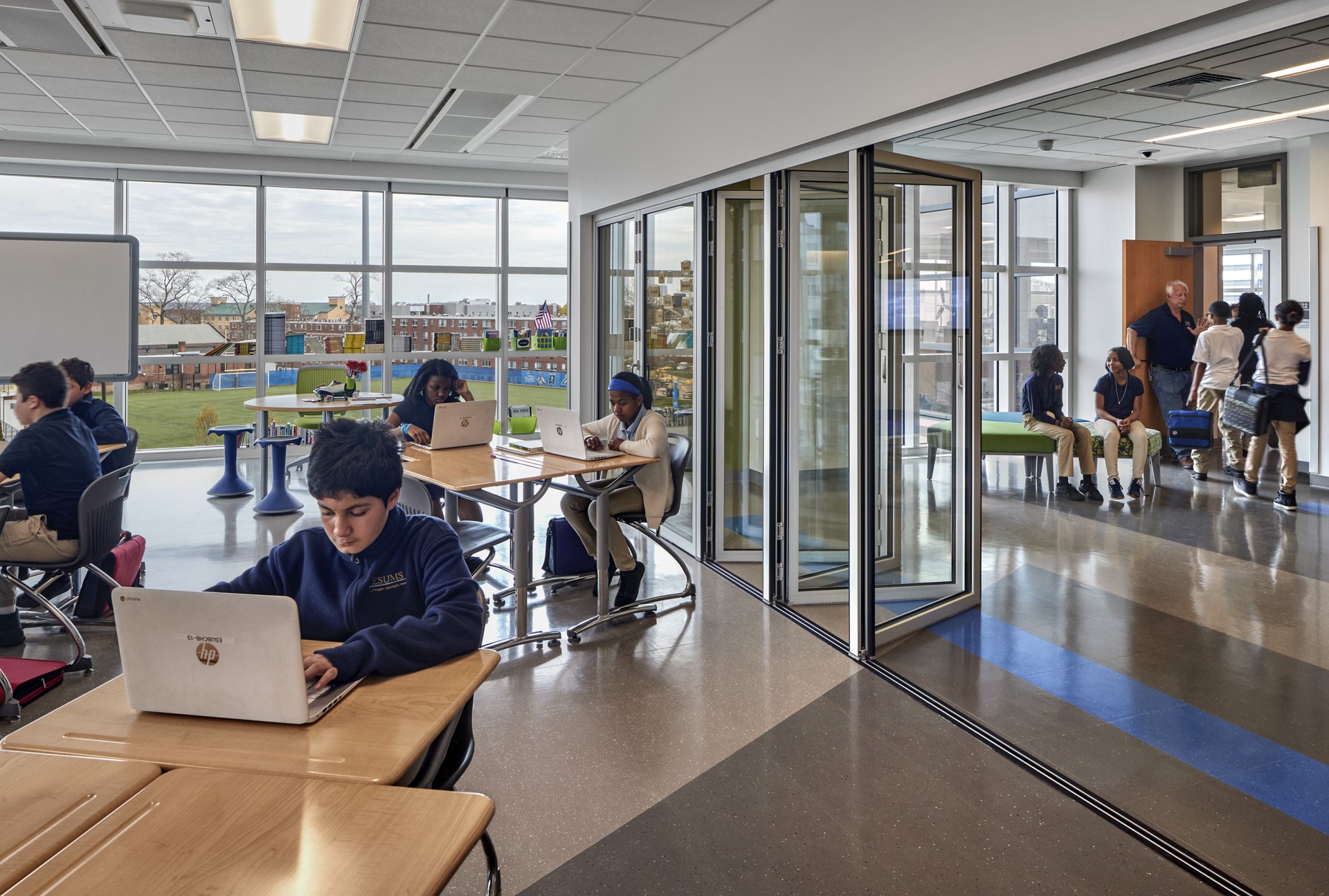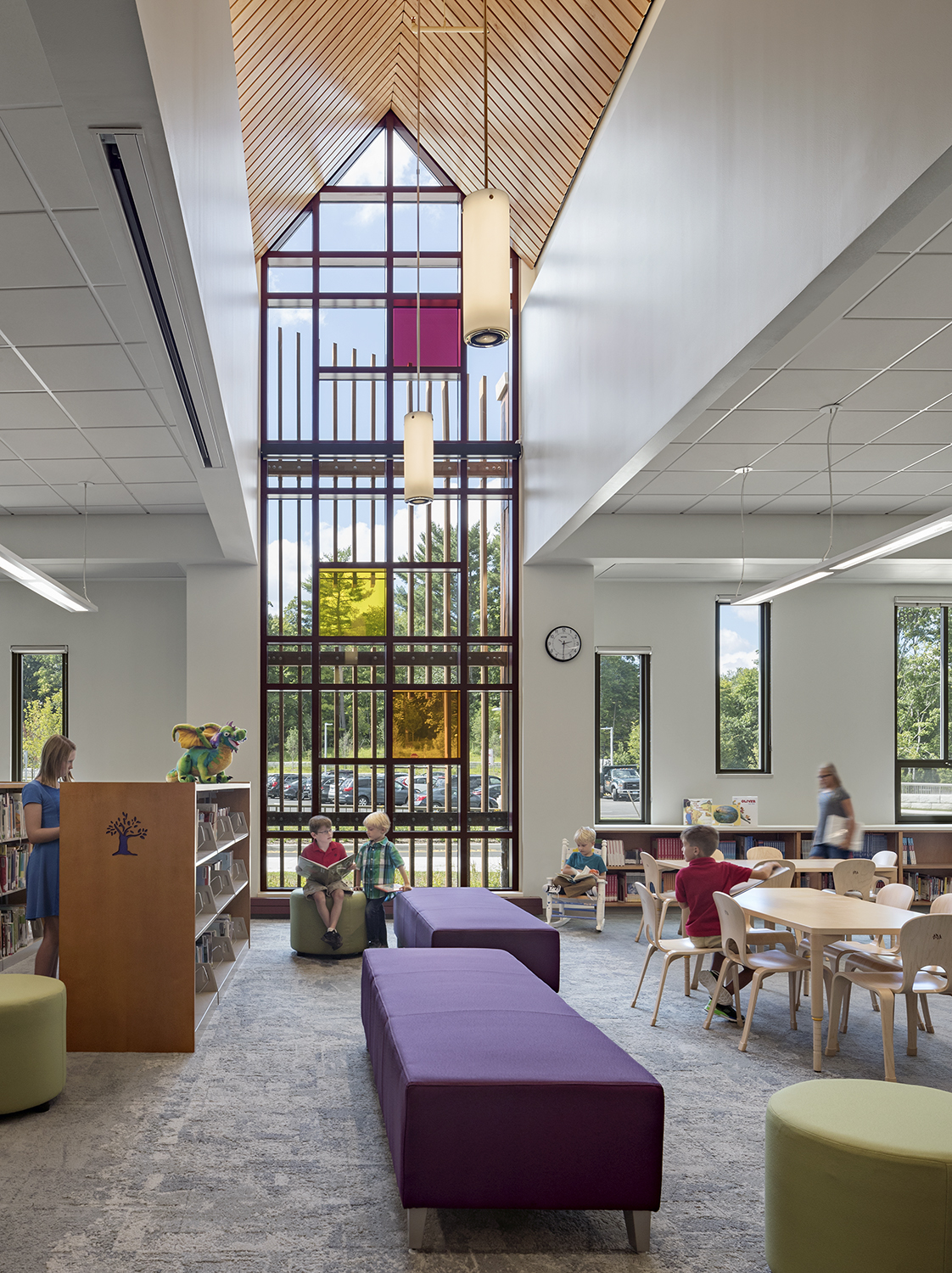Design Solutions for K12 Education
September 9th, 2020
If one needs to find a silver lining in the ongoing pandemic crisis, a big one is the way it has revealed things about our society that we didn’t know, and crystallized others we suspected to be true. One thing we have learned about our kids is, given the tools and a suitable environment, they can learn quite well from home. Many of them even prefer it. But long-term, there is no replacing the in-person instruction and collaboration that takes place in school buildings, especially for special education students and those from economically disadvantaged backgrounds.
The primary challenge facing us as we attempt to return to school buildings is that there is no one-size-fits-all solution. Every school building is unique, and so is the community it serves. In this context, the pandemic should inspire innovation. While school boards, administrators and teachers grapple with staggered schedules, PPE distribution, temperature checks, and social distancing enforcement, building professionals should consider how to retrofit existing K-12 facilities – and rethink the designs for new ones.
Our children learn differently than we did at their age, and the student populations are as diverse ever, plus they are digital natives. Our schools need to reflect these paradigm shifts, as well as the given circumstances of a global pandemic, and the potential for more of them in the future. Given the costs and projected budget shortfalls, the task seems daunting. But lessons learned from our recent work – and from the experiences of an unexpected switch to supervising distance learning for many of us and our colleagues – provide a framework for some cost-effective recommendations.

- Reimagine learning (and teaching). It’s time to move beyond the classroom walls. My colleague Marissa Mead and I have written about adapting to a virtual learning environment, how we learned to create various learning zones both inside and outside our homes and how our children adapted rapidly. We need to apply this thinking to the K-12 facility. For example, schools with a robust safety plan can repurpose auditoriums, libraries, cafeterias, gymnasia and music rooms to afford the room needed for social distancing. These spaces can also provide a haven for students who can’t stay at home to work independently. In the warmer months, classes and free-study periods can be conducted outdoors.
- Organize for focus and engagement. There are strategies teachers and administrators can use – reorganizing classroom layouts or even utilizing hallways – to optimize space for in-person attendance while reducing stress and feelings of claustrophobia. One such strategy is to radically reduce clutter, which we have found to improve focus in the virtual setting at home. Another is to tackle certain topics through Socratic discussions in large spaces that allow for social distancing and active engagement. Along these lines, rethinking furniture is timely: bulky desks and casework may now be a relic of the pre-digital, and pre-Covid-19, learning environment. Opening up space and encouraging movement, standing, and stretching, can contribute to student alertness, engagement and enjoyment.

- Utilize color. It is well understood that colors in the learning environment can impact mood and performance. When staff and students return to the school building with concerns over viral transmission on their minds, simple modifications like a reassuring color choice can make a big difference. Adopting principles of Feng Shui, stakeholders can aim for creating a living environment that is calming while simultaneously fostering alertness by adding carefully selected elements for visual stimulation.
- Bring students into the decision-making process. When communities are designed to support all members, they become healthier and more sustainable, and the best way to achieve that is by bringing everyone into the process. Wherever possible, students should have a say in the reimagining of their schools and classrooms, both in appearance and function. As they live and study through seismic change, it’s important that schools support their ability to memorialize their experience, perhaps with murals or outdoor projects. Beyond aesthetic and artistic choices, students can benefit greatly from learning about the design, construction and maintenance of their schools, in ways that could spur them to consider careers in related fields.
- Make school a second home. When the learning environment is nurturing and welcoming, meeting the social and emotional needs of both students and staff, learning outcomes improve and the community at large reaps the benefits. Combined with views of outdoors and natural daylight, biophilic elements like plants and figurative art depicting scenes from the natural world go a long way toward creating an ideal setting. Displays of student projects, wood furniture, and cozy, colorful rugs can provide additional warmth. A space with heart can be a conduit to ideas and innovation.
See full article in Retrofit print issue here.









